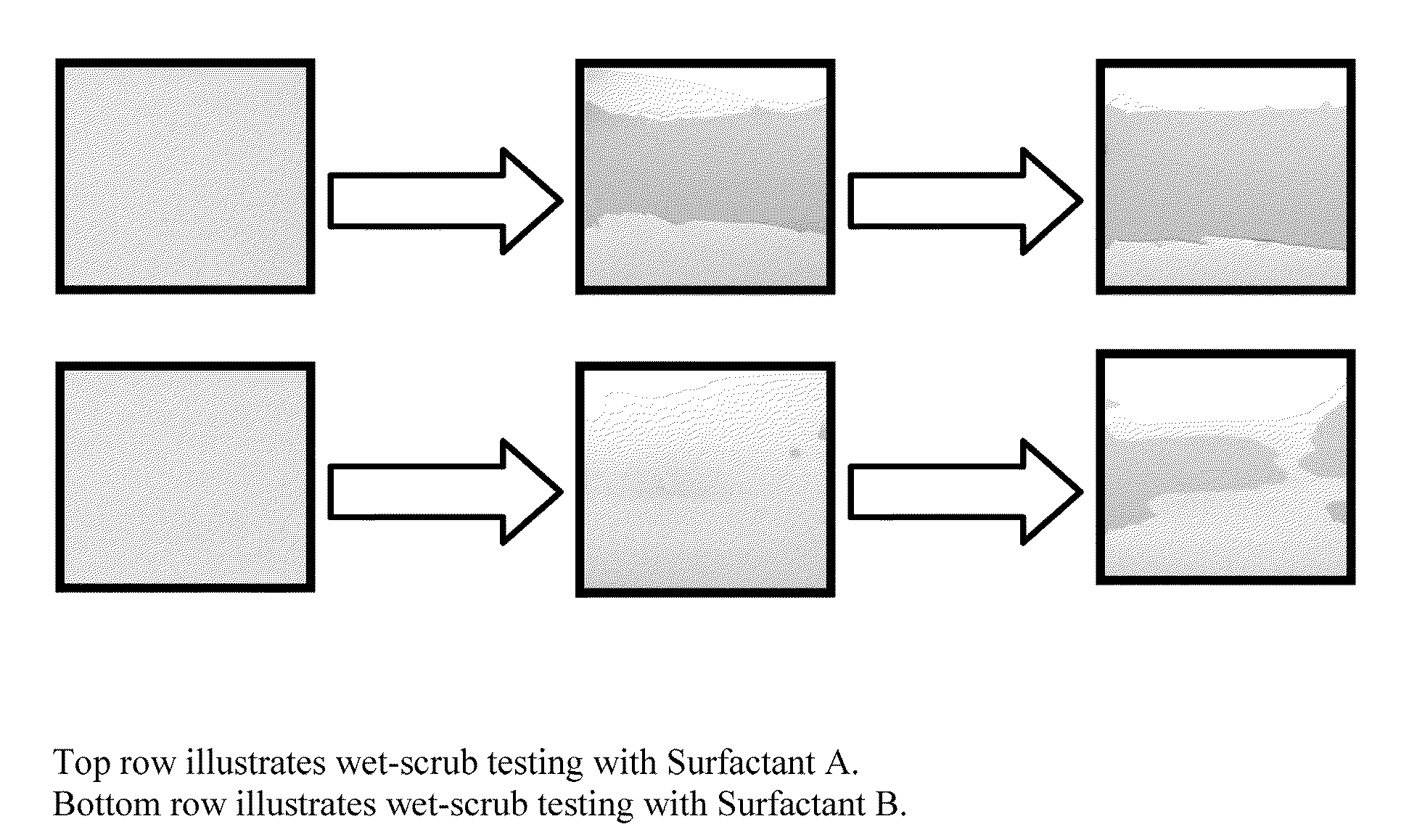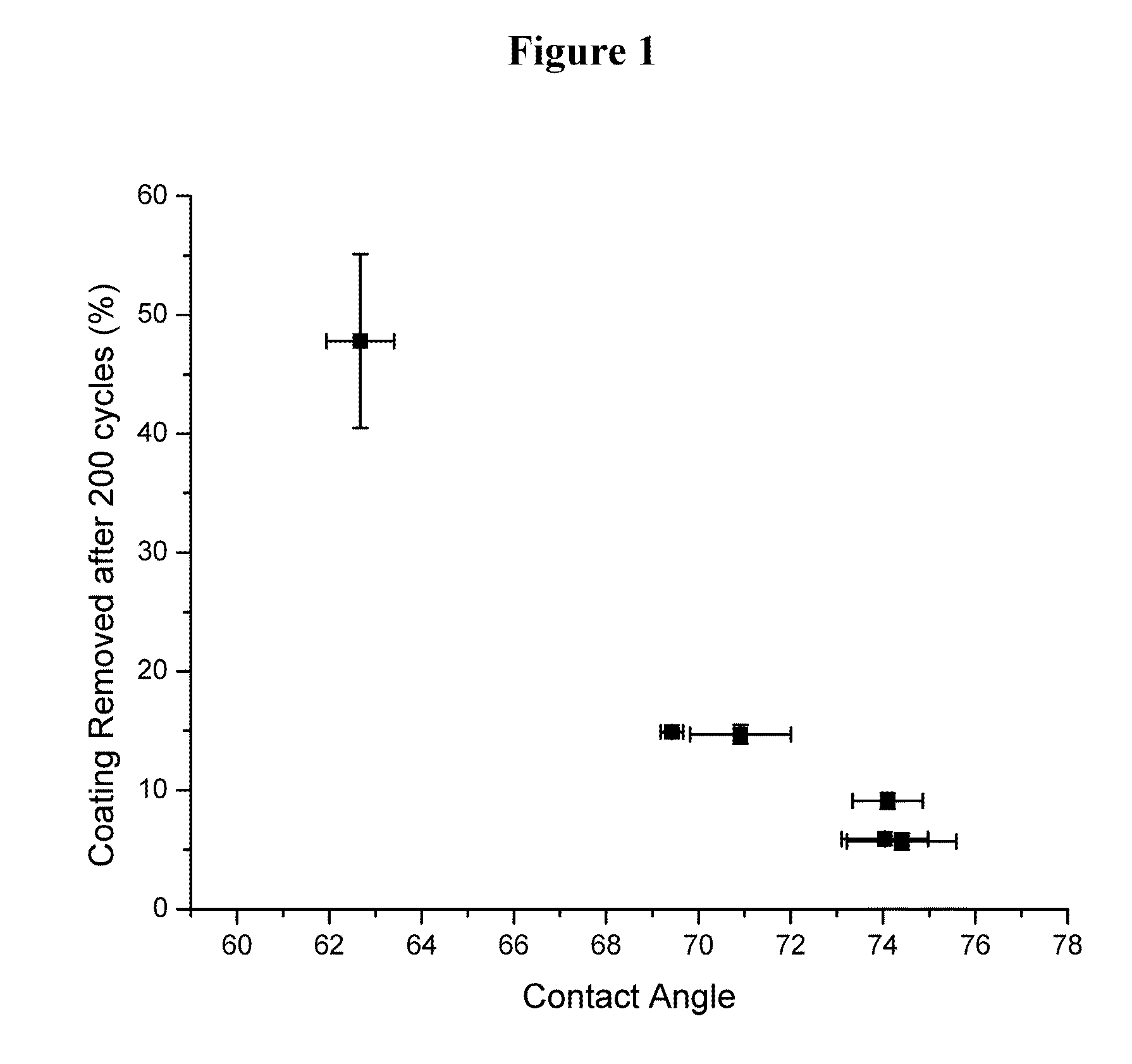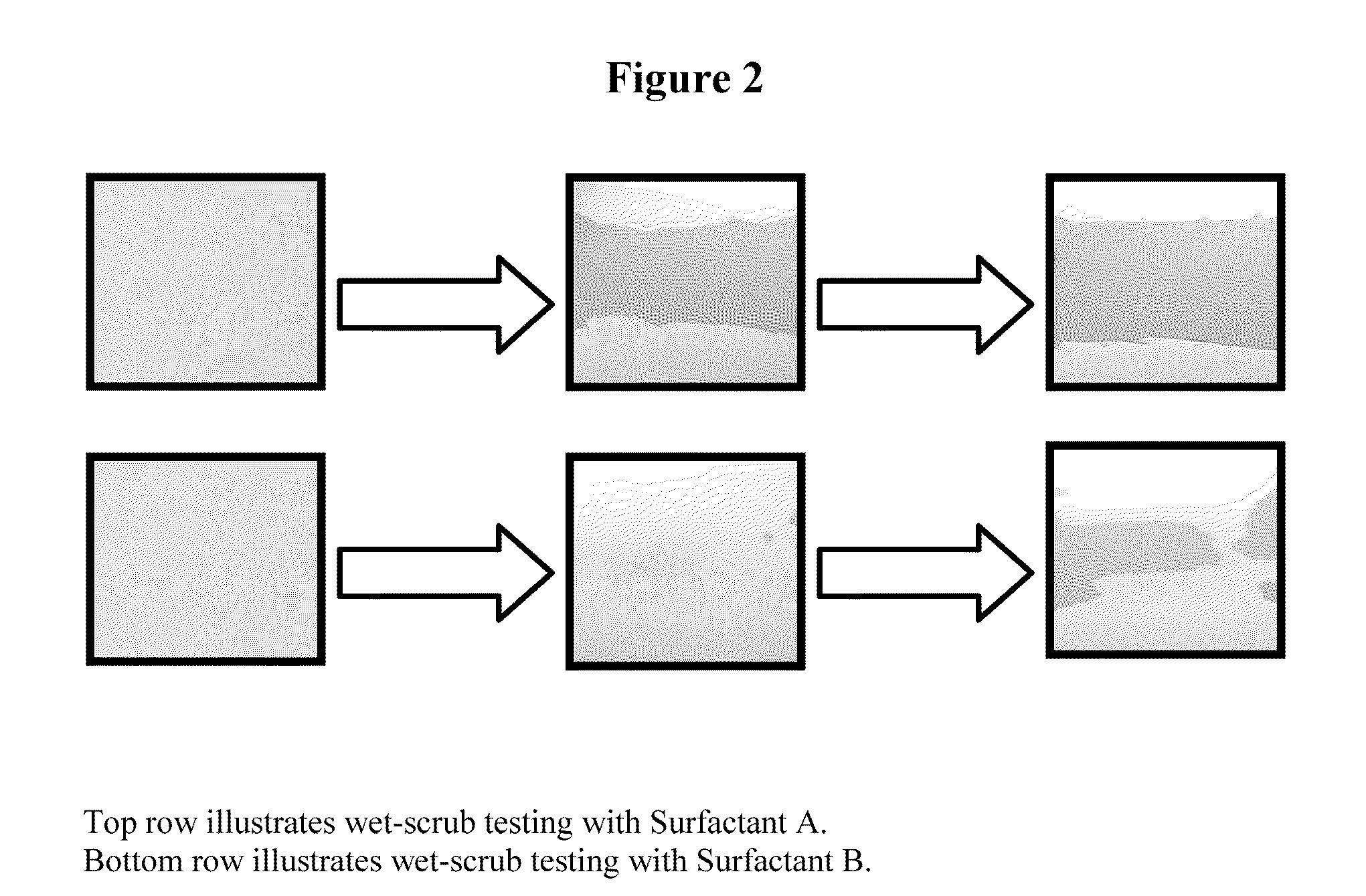Substituted Alkoxylated Phenols and Branched Sulfates for Use in Emulsion Polymer Latexes
a technology of emulsion polymer and phenol, which is applied in the direction of plastic/resin/waxes, basic electric elements, electrical equipment, etc., can solve the problems of increasing the difficulty of achieving desired properties such as block resistance, adhesion, gloss, and minimal film-, and achieve the effect of improving adhesion and blister resistan
- Summary
- Abstract
- Description
- Claims
- Application Information
AI Technical Summary
Benefits of technology
Problems solved by technology
Method used
Image
Examples
examples
Preparation of Latexes Used in Pressure Sensitive Adhesives
[0049]The following procedure is typical of the procedure that was used to prepare low Tg latexes for testing:
In a 2-L round bottom flask, 0.5 g (0.1 weight % based on monomer (BOM)) of sodium bicarbonate, 200 g DI water, and 32 g (0.4 weight % BOM) of an acrylic seed latex (particle size ca 65 nm) were added. A monomer emulsion with the following formulation was prepared:
0.9-1.3 weight % BOM nonionic surfactant
0.05-0.2 weight % BOM anionic surfactant
0.3 weight % dioctyl sulfosuccinate, sodium salt
200 g deionized water
The monomer composition comprised:
74 parts 2-ethylhexyl acrylate
10 parts butyl acrylate
15 parts methyl methacrylate
1 parts acrylic acid
[0050]The kettle was charged to a temperature of 83° C. at a stirring rate of 150 rpm, under a nitrogen blanket. A 20 g solution of 0.38 weight % BOM initiator (ammonium persulfate) was added to the kettle, and the monomer emulsion was fed for 120 minutes. After 10 minutes of mo...
PUM
| Property | Measurement | Unit |
|---|---|---|
| Percent by mass | aaaaa | aaaaa |
| Percent by mass | aaaaa | aaaaa |
| Percent by mass | aaaaa | aaaaa |
Abstract
Description
Claims
Application Information
 Login to View More
Login to View More - R&D
- Intellectual Property
- Life Sciences
- Materials
- Tech Scout
- Unparalleled Data Quality
- Higher Quality Content
- 60% Fewer Hallucinations
Browse by: Latest US Patents, China's latest patents, Technical Efficacy Thesaurus, Application Domain, Technology Topic, Popular Technical Reports.
© 2025 PatSnap. All rights reserved.Legal|Privacy policy|Modern Slavery Act Transparency Statement|Sitemap|About US| Contact US: help@patsnap.com



